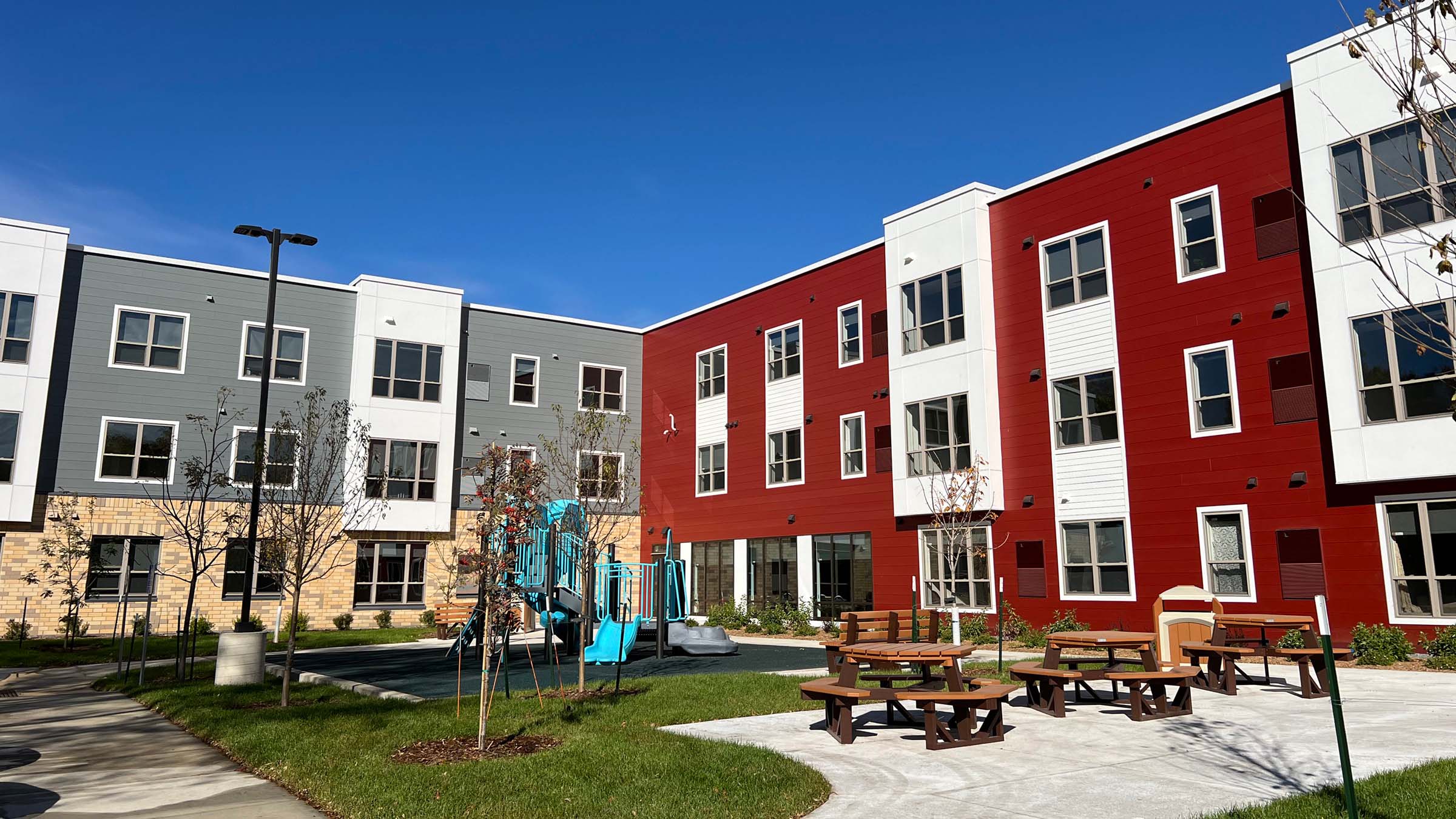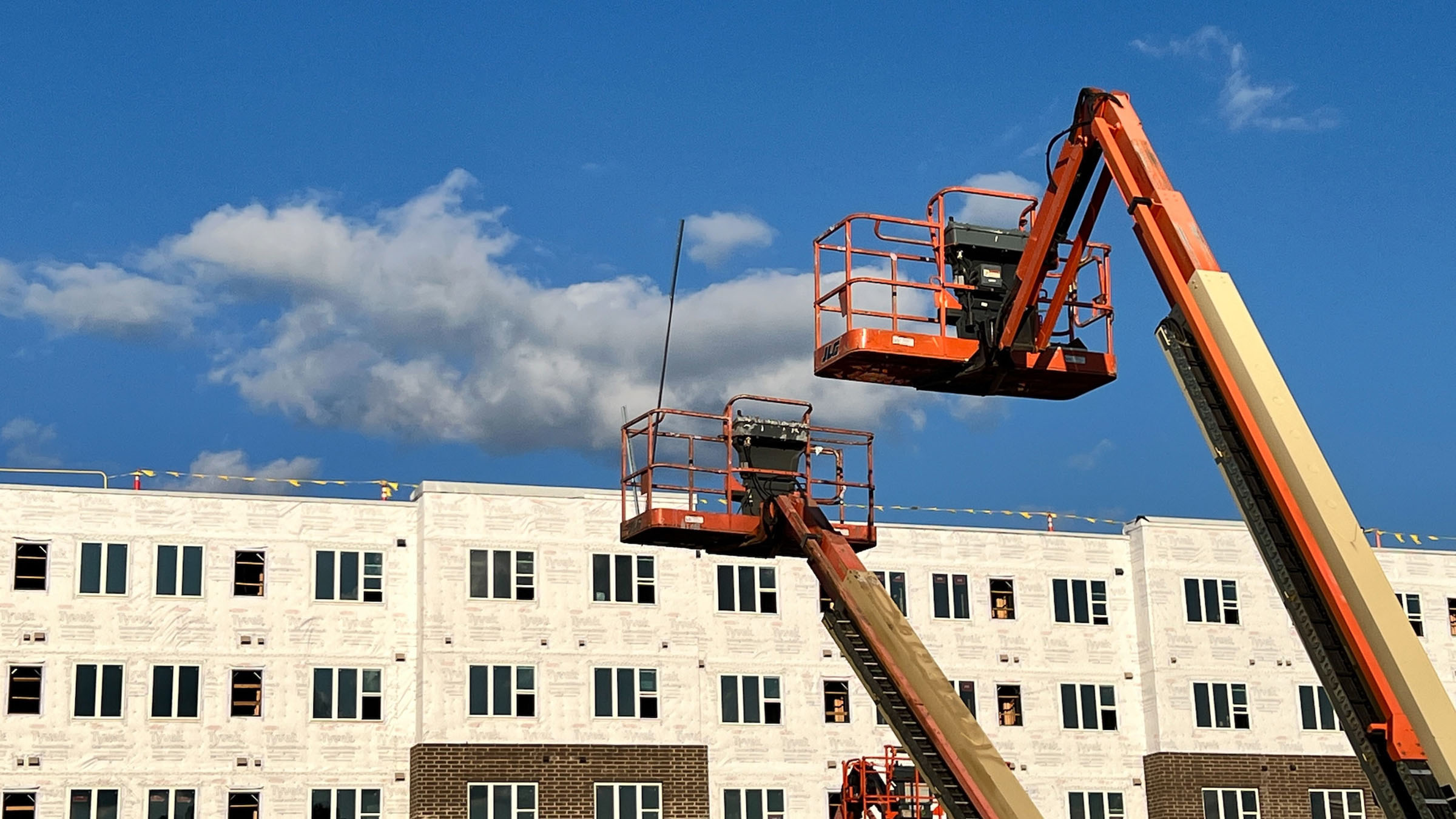In conversations with Federal Reserve Bank of Minneapolis staff members in late 2023 and early 2024, owners and operators of multifamily rental housing shared anecdotes of dramatic increases in property insurance premiums and deductibles. While data are available to measure changes in property insurance costs for homeowners, few to no quantitative data exist on multifamily property insurance costs.
To address this, the Minneapolis Fed surveyed multifamily housing owners about their insurance experiences. We received responses from 35 owners who together operate nearly 45,000 units in Minnesota, Montana, North Dakota, and South Dakota, the four states that lie entirely within the Ninth Federal Reserve District. The responses from this convenience sample1 confirm the anecdotal evidence that property insurance costs are a deepening concern—one that’s particularly relevant to housing affordability for the low- and moderate-income communities whose economic outcomes the Community Development and Engagement team at the Minneapolis Fed hopes to advance.
Property insurance premiums and deductibles are rising
Gradual year-over-year increases in insurance premiums are expected, but multifamily housing owners and operators (referred to collectively as “owners” in the text below) have experienced significant increases over recent years. Our survey respondents’ annual premiums increased by an average of 14 percent from 2021 to 2022, 22 percent from 2022 to 2023, and 45 percent from 2023 to 2024.2 (See Figure 1, which shows average and median year-over-year increases.) On average, property insurance premiums in 2024 were double those of 2021, more than six times the increase in the Consumer Price Index3 over the same time period. Median increases were lower but still outpaced inflation.
“We estimate that over 50 percent of our overall operating expense inflation since 2020 can be explained by property insurance premium increases,” one respondent commented. “Property insurance increased from 6 percent of our total operating expenses in 2020 to a forecasted 14 percent in 2024.”
According to respondents, insurers most often tied premium increases to weather risk, claims histories, and buildings’ physical characteristics. Respondents generally found these explanations unsatisfying.
“Something is not right,” commented a respondent with zero claims and a 200 percent increase in their premiums.
Since 2022, deductible increases have outpaced premium increases among respondents. Average year-over-year deductible increases were about 23 percent, 27 percent, and 412 percent for each renewal from 2021 through 2024, or a total increase of 700 percent over 2021’s deductibles.4 (See Figure 2, which shows the year-over-year increases.) However, to remove the impact of a small number of respondents with unusually high deductible increases, we also looked at the median, or the percentage increase in the middle of the distribution of responses. At the median, deductibles did not increase for 2021 to 2022 or for 2022 to 2023, and increased by a relatively modest 12 percent from 2023 to 2024. Accepting higher deductibles reduces premiums but also requires housing owners to have ready access to cash in the event of damage, which limits their ability to invest and recapitalize.
Several owners increased their deductibles or reduced coverage to mitigate higher insurance costs. However, if property owners accept less coverage, they may end up in precarious positions if their properties get damaged. And, based on what respondents told us, this strategy is not always an option for affordable housing owners who have deductible limits or coverage requirements from their investors and lenders.
Respondents report more and more coverage exclusions over the same 2021–2024 time period. In other words, fewer causes of damage are eligible for reimbursement. Some insurers stopped covering certain damages; some respondents requested exclusions to lower their premiums. Roughly a third of our respondents have more exclusions for wind and hail damage than they had three years ago. Commenting on the exclusions and endorsements (amendments that change the terms of an insurance policy), one respondent wrote that there are “so many that a new policy is like a book. You nearly need an attorney to read it to see if you actually have any coverage.”
Property insurance is a national market, so it’s not surprising that multifamily owners across the four states we included in our survey described similar experiences of rising costs. However, one geographically specific trend emerged. Some owners with properties in Minneapolis and St. Paul reported that their insurance companies believed that these cities carry higher risks (and thus warrant higher insurance premiums) because of property damage and perceived high crime rates during civil unrest in 2020. One owner commented, “We’ve heard that some prospective carriers wanted to include a riot exclusion.”
Owners employ a range of strategies to mitigate increasing insurance costs
Multifamily property owners are attempting to mitigate higher insurance costs by seeking bids from other insurance companies; avoiding filing claims; decreasing operating expenses; and increasing rent, if they can. Almost all of our respondents sought other bids. One respondent noted, “We’ve done everything in our power to keep the increases down (raise deductibles, properly maintain our properties, reduce coverage, shop around).” Three in five of our survey respondents increased rent to mitigate higher property insurance costs.
Over half of our survey respondents reported implementing some type of resiliency measure—such as updating roofs, installing fire sprinklers, or changing construction materials—at their properties, yet several of these owners did not receive discounted rates from their insurers. A multifamily housing owner noted, “No matter how hard we try to develop resilient housing options, it seems they still rate the risk the same.”
Rising premium costs pose particular challenges for affordable housing providers
Nearly two-thirds of our survey respondents provide housing that, whether publicly subsidized or not, is affordable to lower-income households. Affordable housing providers, particularly those that have accepted public funding, have less freedom to increase rents and reduce their property insurance coverage than market-rate owners who rent to higher-income households.
Owners of publicly subsidized affordable housing cannot raise rents beyond amounts dictated by their funding sources. One affordable housing provider shared that their rents typically increase by 3 to 4 percent per year, but “when insurance and other operating expenses are growing at a much faster rate, it doesn’t take long before properties cannot cover their operating expenses.” Another affordable housing provider observed, “While our rents are below the fair-market rent, it’s a difficult decision to increase rents, as affordable housing is the backbone of a thriving community.”
Not only is it harder for affordable housing providers to reduce their insurance coverage and increase rents, but shopping around for cheaper insurance policies is more difficult as well. Respondents who own or manage affordable housing reported increasing difficulties in finding competing bids to meet their insurance needs. Several wrote that some insurance companies no longer cover multifamily housing generally, or affordable housing specifically. “At first, we were astonished when many carriers openly admitted that they don’t like to insure affordable housing,” wrote one. Another reported that their insurance company of 30 years told them that “their portfolio can’t support affordable housing projects anymore.” Still another shared that “several carriers declined to provide quotes as a result of our operations [in] low-income housing.”
Continued growth in operating costs endangers multifamily housing
The scale of insurance cost increases is heightening the financial vulnerability of multifamily housing, especially affordable housing, both subsidized and not. To retain insurance, owners are accepting large deductibles and policies that do not adequately cover their financial risk. As one owner noted, “Most of [the] portfolios like ours are just one claim away from significant financial stress.”
At the same time, many owners can no longer rely on rents to cover operating costs and are turning to their operating reserves. One respondent observed, “[Drawing on cash reserves] is not sustainable for either [our organization] or the property in the long term, and we’re concerned that affordable housing properties will close entirely if this persists.” Other owners expressed concern that cost increases will make development of new housing, especially affordable housing, financially impossible. Commented one, “The increasing cost of insurance is starting to impact decisions regarding new developments for affordable housing.”
While our survey findings cannot predict the future of multifamily property insurance costs, continued increases could endanger the financial viability of multifamily housing and may discourage future development. This threat to housing supply may jeopardize price stability and housing affordability for low- and moderate-income communities. At a moment when increasing numbers of households face rising rents across our region, property insurance costs threaten continued maintenance of and investment in our region’s housing stock.
The authors are grateful to the organizations that helped disseminate our survey: HousingLink, Metropolitan Consortium of Community Developers, Minnesota Multi-Housing Association, Montana Housing, and Twin Cities Housing Alliance. The authors thank Rebecca Svatek, David Paul Thebus, Amanda Welliver, and Will Yetvin, who are students at the Humphrey School of Public Affairs at the University of Minnesota, for their collaboration on our survey.
Appendix: About our respondents
The Minneapolis Fed distributed a survey in fall 2024 to multifamily rental housing owners and asked them to respond and also share the survey with others in their field. We heard from 35 multifamily housing owners, representing mostly Minnesota and Montana, who together operate 44,618 units in Minnesota, Montana, North Dakota, and South Dakota. According to the responses from this convenience sample, these owners represent roughly one in 13 multifamily rental apartments in these four states. The table below lists the sizes and types of firms represented in our sample.
| Size of firm, by number of units owned or managed | Number of firms |
|---|---|
| Small (<500 units) | 16 |
| Medium (500–2,499 units) | 15 |
| Large (2,500–3,999 units) | 0 |
| Very large (4,000+ units) | 4 |
| Market segment (some firms operate in multiple segments) | |
| Class A and/or B5 | 11 |
| Class C and/or naturally occurring affordable housing)6 | 22 |
| Income-restricted affordable housing | 22 |
| Business model | |
| For-profit | 20 |
| Nonprofit | 14 |
| Public agency | 1 |
| Location (two firms have properties in a combination of Minnesota, North Dakota, and/or South Dakota) | |
| Minnesota | 26 |
| Montana | 8 |
| North Dakota | 2 |
| South Dakota | 2 |
Endnotes
1 A convenience sample is a group of research participants selected through their accessibility to the researchers instead of through a randomized process.
2 Premium changes are adjusted for changes in insured values.
3 Calculation based on comparing the annual average Consumer Price Index for All Urban Consumers for the years 2024 and 2021.
4 These averages exclude two survey respondents due to inconsistency in units reported. They also exclude four survey respondents who did not respond to these particular questions.
5 According to asset-class categorizations used across the real estate industry, Class A properties tend to be newer buildings with higher rents, while Class B properties tend to be older, with average rents for a given market.
6 Naturally occurring affordable housing, or NOAH, is an industry term used to describe housing that is affordable to low- to moderate income households but is not income-restricted.
Libby Starling is Senior Community Development Advisor in Community Development and Engagement at the Federal Reserve Bank of Minneapolis. She focuses on deepening the Bank’s understanding of housing affordability, concentrating on effective housing policies and practices that make a difference for low- and moderate-income families in the Ninth Federal Reserve District.







